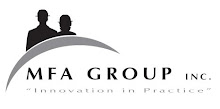Seven Steps To Seven Figures (Part 1 of 2)
Back in the day, the ‘Million Dollar Practice’ was a big thing; it was an achievement of note, setting the practitioner apart from his or her competitors.
A ‘million dollar firm’ would have been a practice that dominated its local marketplace and allow the owner to gain real financial freedom.
But almost twenty years after people like Dave Cottle and Chris Fredericksen first spoke and wrote about the million-dollar practice, seven figure billings are now being achieved by many progressive sole practitioners.
I have clients, for example, yes, sole practitioners, who bill over $2.5m in fees each year. How do they do it? Well, we’ll get to that a little later.
Funnily enough, all of these million dollar (plus) practitioners have seven key attributes in common. And today I will share them with you.
If a seven figure firm is relatively easy to build today, why do the vast majority of sole practitioners tend to ‘flat line’ at billings somewhere between $400,000 and $600,000 a year? What is needed to project a firm from 6- to 7-figures?
Well, let me explain…
I won’t pretend that it’s quick or easy, but it is definitely possible!
Before we look at the seven steps, there are 4 other things they (mostly) do which can be layered over all seven steps.
a) Planning
b) Monitoring/Recording/Keeping Score
c) Amending
First of all, each and every one of them that I know plans. They prepare a business plan for their firm, as they would for a client.
Then, they monitor their performance against the plan and look for areas where they did not achieve their goals.
Next, they then try to determine why that was, then they amend their plan for the next period (usually quarterly) and move ahead. Where goals were exceeded, they examine what went well and why and try to take any learnings from this that could be applied to other areas of the firm.
If you look at the seven steps, you will probably agree, that all three layers can apply to all seven steps.
So, let’s take a look at these steps now.
1. The Desire to Innovate & The Use of Technology.
Public accounting is not known for its ability to be creative. Indeed, it has been a long time since the profession introduced a new service to the marketplace. It was probably the ‘Review’ engagement if my memory serves me right.
However, some firms have been very innovative by bundling services together to create tangible ‘products’ from what were previously considered intangible services, and priced them accordingly.
The other side of the innovation step, is that all of the 7-figure firms were obsessively upgrading their software and hardware – fully embracing technology as a tool that enabled them to exist in the way they do, rather than seeing I.T. as simply another cost-centre, to be contained and reduced at all cost.
The savvy firms assessed each I.T. investment opportunity by saying to themselves “What will this do for us? What will it do for our clients? What does the cost/benefit analysis tell us?” before making any major decision, but if the numbers stacked up, they always invested.
All of the firms I know of now have scanning and auto-flow software for their clients’ tax return preparation, taking the prep time per tax return tumbling down.
2. Staff Selection, Training & Delegation
‘Will this person fit in around here?’ is how most potential employees are assessed at interview. There is little focus on their accounting or tax ability. To paraphrase Jim Collins in Good To Great, their mentality is ‘get the right people on the bus and together they will determine where to drive it.’
Then, the owner has to have the strength of character to delegate work to these people - preferably to their level of incompetence (A sort of twist on the ‘Peter Principle’).
In other words, give people work that they’ve never done before and they’ll learn new skills.
They’ll grow professionally and it will be a better place for everyone to work. Provide excellent training and coach and mentor your people – one of them has to become your successor!
3. Client Selection
This really is a major point. For the most part, 7-figure sole practitioners only work with clients that:
a) Actually want and appreciate your services
b) See the value in what you’re doing for them
c) Have the money to pay the level of fees you want to charge
d) Have an ability to make referrals to similar people
e) Are fun to deal with – they’re people you actually like
Some firms like to establish a niche market to establish ‘top-dollar-rates’ (see the section on marketing in the next issue) while others just want to be seen as the premier firm to deal with , and price their services accordingly.
Clients who do not want to pay the extra because they do not see the value are clearly not the type of client that they will want to deal with so they have the courage to say ‘NO’ to these business people.
Imagine that!
Seriously, this is another very important point.
Indeed, if you have any existing clients you’d sooner not deal with, then you need to fire them before you have any real chance of moving forward.
The other 4 steps are:
1. Value-Added Services
2. Pricing
3. Financial Acumen
4. Marketing
And we will cover these issues next time.
Sunday, September 13, 2009
Subscribe to:
Posts (Atom)


